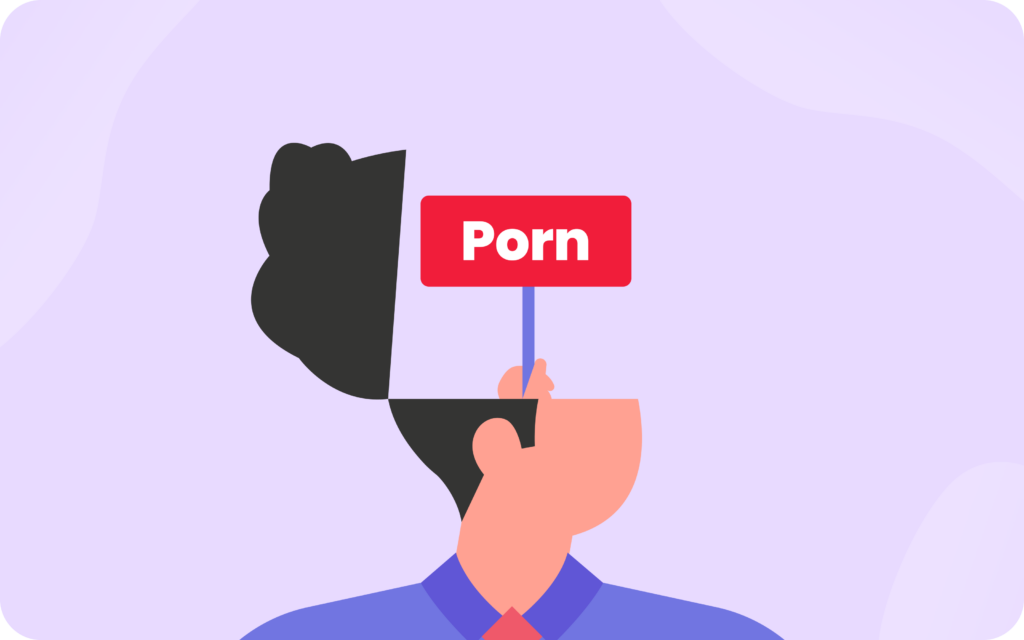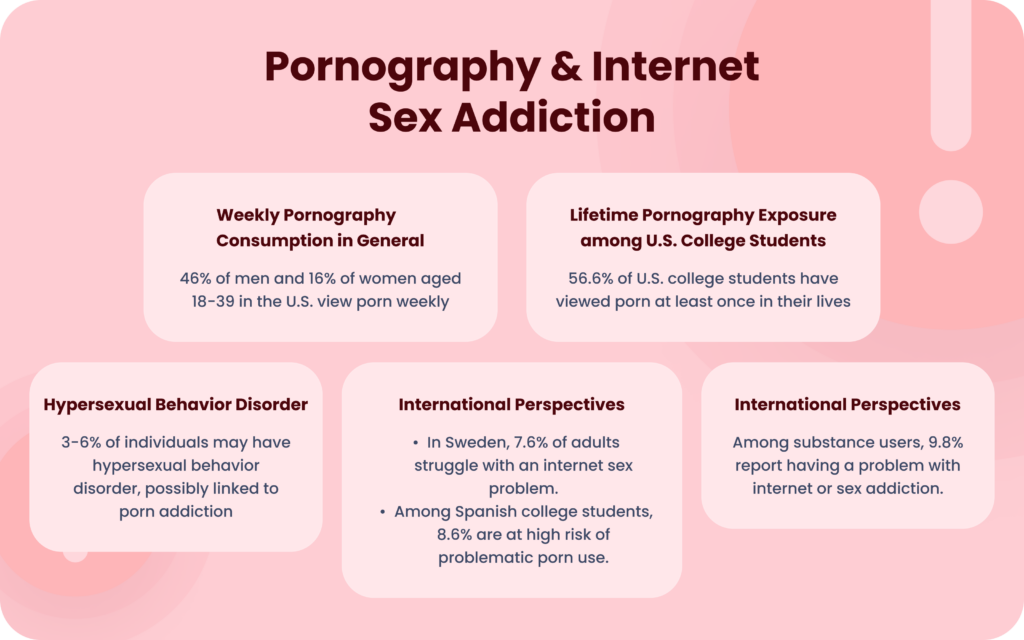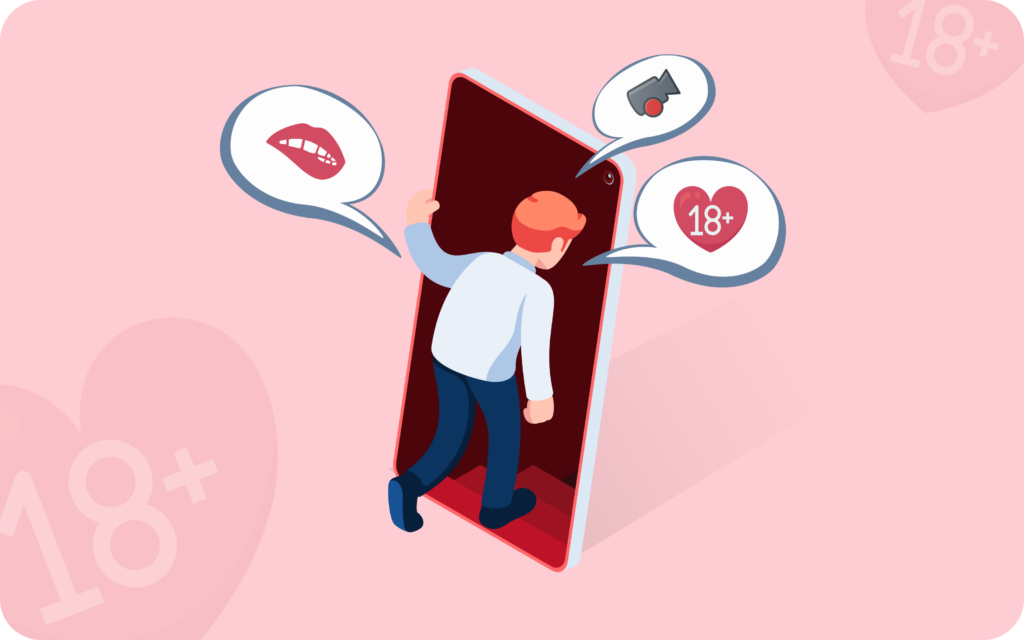Understanding Pornography Addiction: Causes, Effects, and Recovery
There is no doubt that the internet and digital technology have grown in recent years. With this growth comes increased access to pornography.
Viewing pornography itself may not be harmful, but excessive porn consumption can be problematic. Over time, a person may develop signs of porn addiction.
Unfortunately, addiction to porn can have a negative impact on a person’s mental health, relationships, and general wellbeing. If you or someone in your life is struggling with porn addiction, there is help available.
In this comprehensive guide, we’ll cover everything you need to know about porn addiction. This includes its causes, consequences, and potential treatment options.
Introduction to Pornography Addiction

Pornography addiction, also known as porn addiction, occurs when a person uses porn excessively and compulsively. This use of porn then interferes with daily life and causes negative consequences. A person with a porn addiction will continue to consume porn, despite these consequences.
When a person is addicted to porn, they lose control over their behavior. This is similar to what is seen with substance use or addiction. With the loss of control, a person continues to use, despite consequences.
Porn addiction may include compulsive use of pornography alongside masturbation. Over time, a person may derive all of their sexual pleasure from porn, thereby avoiding intimacy with a partner.
Is Porn Really An Addiction?
Maybe you aren’t quite convinced that porn addiction exists. After all, when you think of addiction, you probably imagine substance abuse.
While drugs and alcohol are often the subject of addiction, people can also have behavioral addictions. The Diagnostic and Statistical Manual of Mental Disorders (DSM-5) is the book clinicians use to diagnose a mental health disorder. This book currently includes one behavioral addiction: gambling disorder.
The DSM-5 also contains internet gaming disorder in a section called “conditions for further study.” These conditions may be included as official diagnoses in future versions of the DSM.
The point is that the DSM-5 recognizes that behaviors can become an addiction. As a behavior, porn consumption can fall into the category of a behavioral addiction.
Clinicians may also classify a porn addiction as an “unspecified sexual dysfunction.” This category captures symptoms that cause distress but do not meet full criteria for a sexual problem like erectile dysfunction. The DSM-5 previously discussed hypersexual disorder, which fits under this category as well.
Beyond formal diagnoses in the DSM-5, it’s helpful to consider research related to porn addiction. A large body of research has confirmed that excessive porn use can lead to symptoms consistent with addiction. Like substance addiction, porn use can cause changes in the brain’s reward system. This leads to compulsive use of porn, despite negative consequences.
Statistics on Porn Use and Addiction

Some statistics related to porn use and addiction may be of interest:
- Research with American adults shows that 46% of men and 16% of women aged 18-39 view porn weekly.
- A study with U.S. college students found 56.6% of them had viewed porn at some time during their lives.
- Studies suggest that 3% to 6% of people have hypersexual behavior disorder, a term which is sometimes used to describe conditions including porn addiction.
- International research with Swedish adults has found 7.6% struggle with an internet sex problem; research with Spanish college students has found that 8.6% are at high risk of problematic porn use.
- In a study with substance users, 9.8% reported they had a problem with internet or sex addiction.
- A study with U.S. adults revealed 3% of women and 11% of men feel they are addicted to pornography.
Based upon these data, porn use is relatively common, with men being more likely than women to consume porn. Porn addiction is less prevalent than general use, but it’s not entirely uncommon. Again, men are more likely than women to be affected by porn addiction.
Understanding Pornography Consumption
It’s helpful to understand more about pornography consumption, to place porn addiction in context. First, let’s define porn. Porn involves a range of sexually explicit material, including sexual images, videos, and written content. This material is created to enhance sexual arousal and provide gratification.
Some people use porn as a form of sexual exploration or entertainment. They may find that moderate use enhances their sex life. However, excessive use can have the opposite effect, leading to addiction and relationship problems.
Below, let’s learn more about the history of porn and its different formats.
Evolution of Pornography Consumption:
- Historical Perspective: Pornography has existed throughout human history, evolving alongside technological advancements and societal norms.
- Internet Revolution: The advent of the internet made porn more readily available and affordable.
Types of Pornography:
- Mainstream Pornography: Produced by professional studios and featuring scripted scenarios, mainstream pornography is the most common form of pornography consumed online.
- Amateur Pornography: Amateur pornography consists of user-generated content, often uploaded to amateur websites or shared through social media platforms. The internet allows anyone to post amateur porn videos, and they can remain entirely anonymous.
As indicated above, porn has long been a part of our culture. Now that the internet and digital technologies have grown, everyone has access to porn. If a person is addicted, this makes it easy for them to feed the addiction.
Signs of Porn Addiction
Porn consumption is a part of our culture, especially with the growing popularity of digital technologies. Given this fact, it can be difficult to separate casual porn use from addiction. Remember that porn addiction involves compulsive behavior and excessive use, along with consequences.

So, porn addiction comes with some specific symptoms that separate it from casual use. Below are the typical porn addiction symptoms:
- Demonstrating a strong urge to use porn, similar to what we’d expect from a drug craving.
- Being unable to cut back on porn use, even if one desires to do so.
- Continuing to use porn, even when it causes relationship problems, such as inability to be intimate with a spouse.
- Using porn even when it is causing a mental health problem like anxiety or depression.
- Disengaging from other hobbies and activities because of porn use.
- Spending excessive amounts of time using porn.
- Using porn for longer amounts of time than intended.
- Showing withdrawal symptoms like anxiety or irritability when unable to access porn.
- Needing to watch larger amounts of porn to get the same level of satisfaction.
- Having a difficult time meeting obligations at work, school or home because of time spent on porn.
Case Examples of Porn Addiction
A list of symptoms can be helpful, but sometimes, a few case examples are more useful. Below are two examples of how porn addiction might present.
Molly is a college student, and she has begun to compulsively use porn. She began watching it out of boredom, and quickly became hooked. She found it to be instantly satisfying, so she kept coming back to explore the various videos on a porn website.
Now, she is spending several hours per day using porn. She isn’t doing well in her classes, because she is so distracted. When she is in class, she is often thinking about the next time she will be able to watch porn. She looks forward to time spent alone in her dorm room, so she often cannot wait for her roommate to leave. Sometimes, she even skips class to give herself time alone to watch porn.
Molly isn’t socializing much with peers, and she is beginning to feel quite lonely. Nonetheless, she has been unsuccessful with reducing her porn consumption.
As indicated in the case example above, Molly is continuing to use porn, despite consequences. Her grades are suffering, and she is socially isolating. Despite these negative impacts, she cannot reduce her porn consumption.
Let’s look at another example below:
Andy has been married for 10 years. Over the last few years, he started watching porn with his wife, hoping to spice up their sex life. However, Andy is now watching porn throughout the day, separately from his wife.
Andy’s use of porn is interfering with intimacy with his wife. He finds their sex life boring and unsatisfying, because he prefers the more extreme displays of sexuality demonstrated in porn. On several occasions, he has rejected his wife’s sexual advances, and their relationship is beginning to suffer. Andy is hiding his porn use from his wife, because he feels guilty about it.
Andy knows that porn is causing relationship problems, but he cannot reduce his porn consumption. He has grown quite anxious, constantly worried that his wife will discover the extent of his excessive porn viewing.
In Andy’s case, excessive porn use continues, despite relationship problems. Porn use is also taking a toll on Andy’s mental health, leading to anxiety. These symptoms align with a porn addiction.
Causes of Pornography Addiction
There are several underlying causes of porn addiction. It’s helpful to understand these causes, so you can get to the root of the problem.
Psychological Factors:
- Escapism: Individuals may turn to pornography as a means of escaping from stress, anxiety, or emotional distress. This can lead to excessive use, and eventually, addiction.
- Trauma and Childhood Experiences: Traumatic experiences, like childhood sexual abuse or neglect, can contribute to the development of pornography addiction as a coping mechanism. Research has found that emotional abuse and childhood exposure to porn can lead to compulsive sexual behaviors like porn overuse.
Biological Factors:
- Neurobiology: Pornography consumption activates the brain’s reward system. This releases a brain chemical called dopamine, which is rewarding and reinforces porn use. This brain activity can keep a person coming back for more.
- Brain Changes: Repeated pornography consumption can lead to changes in the brain. These changes make the brain more sensitive to rewarding stimuli, including porn. Over time, this leads to compulsive porn consumption.
Environmental Factors:
- Accessibility: The widespread availability and anonymity of online porn make it easy for anyone to access. So, it’s not difficult to fuel a porn addiction.
- Social Norms: Cultural attitudes towards sexuality and pornography affect the way people view porn. We live in a sexualized society, so excessive porn use may appear normal.
Effects of Pornography Addiction
Porn addiction may not seem problematic, since sex is so glamorized in our society. You may even have friends who also enjoy porn, so you feel your behavior is normal.
However, when porn consumption rises to the level of an addiction, it comes with several consequences. Mental health, relationships, sexual functioning, and social life can all suffer as a result.
Mental Health Effects:
- Psychological Problems: Excessive pornography consumption is associated with increased levels of depression, anxiety, and other mental health isorders. People who perceive themselves to be addicted to porn often suffer from psychological distress.
- Low Self-Esteem: Pornography addiction can contribute to feelings of inadequacy, shame, and diminished self-worth.
Relationship Effects:
- Intimacy Issues: Pornography addiction can lead to difficulties related to intimacy. For example, it can create unrealistic expectations for real-life intimacy. A person addicted to porn may begin to objectify their own partner or view sex as boring or unsatisfying.
- Communication Breakdown: Secrets and lies surrounding pornography addiction can cause communication problems and distrust in relationships. This can lead to conflict and emotional distance.
Sexual Health:
- Erectile Dysfunction: Pornography addiction is linked to erectile dysfunction and other sexual dysfunctions. People who are self-reported porn addicts experience problems with erectile dysfunction and sexual dissatisfaction.
- Distorted Sexual Preferences: Exposure to extreme or deviant forms of pornography can influence individuals’ sexual preferences and behavior. This can make routine intimacy dissatisfying or result in harm to a sexual partner.
Social and Occupational Functioning:
- Isolation: Pornography addiction may lead to social withdrawal and isolation. This occurs when people prioritize porn use over relationships and other obligations.
- Impaired Performance: Excessive pornography consumption can impair cognitive functioning and productivity. A person can become so focused on porn that they neglect job duties. This can lead to low productivity and even job loss.
Recovery and Treatment
If you’re caught in the throes of porn addiction, it’s comforting to know that treatment is available. Through professional help, support groups, and lifestyle changes, you can overcome this obstacle.
Therapeutic Interventions:
- Acceptance and Commitment Therapy: This modality has proven useful for treating porn addiction. It helps people to learn to accept internal urges, while committing to behavioral change. So, it essentially helps people recognize that they do not have to act on urges to view porn.
- Mindfulness-Based Approaches: Mindfulness practices, such as mindfulness meditation can be useful. These approaches help people to develop self-awareness and live in the present, without judging thoughts, emotions, or urges.
- Family or couples therapy: Since porn use can cause relationship problems, family or couples therapy can be beneficial. It can help families overcome some of the wounds associated with porn addiction.
- Cognitive behavioral therapy (CBT): More research is needed to determine its effectiveness, but CBT may be helpful for reducing porn use. This type of psychotherapy helps people to alter unhelpful thinking patterns and change their behaviors.
- Care from a Psychiatrist: Mental health professionals like clinical social workers and psychologists can provide therapy services. However, some people may need to see a psychiatrist, who can prescribe medication. Some case studies have found that antidepressant medications in combination with therapy are beneficial for porn addiction. There is also evidence that naltrexone, a medicine used in addiction treatment, can alleviate problematic pornography use.
- Addiction Treatment: Porn use has much in common with substance use disorders, so addiction treatment can be effective. Some people with porn addictions may seek care from addiction treatment providers. This could include addiction counseling or care at an inpatient facility.
There are several different therapeutic interventions that benefit people struggling with internet pornography use. When you’re ready to begin treatment, a mental healthcare provider can create an individualized treatment plan that suits your needs.
Support Groups and Peer Support:
- 12-Step Programs: Twelve-step programs, such as Sex Addicts Anonymous (SAA) or Porn Addicts Anonymous (PAA), offer peer support. These programs offer support groups where you can learn from others.
- Online Communities: Online forums and support groups provide a platform for individuals to connect with others struggling with pornography addiction. In these forums, users share experiences and offer mutual support.
Peer support often supplements therapeutic interventions, providing additional help.
Lifestyle Changes:
- Healthy Habits: Adopting a healthy lifestyle, including regular exercise, adequate sleep, and balanced nutrition, can support overall wellness. You’re less likely to fall into addictive behaviors when you’re caring for yourself.
- Hobbies and Interests: Engaging in fulfilling activities and hobbies outside of pornography consumption can provide alternative sources of pleasure and fulfillment. Consider learning a new skill, joining a club, attending exercise classes, or taking up cycling or hiking.
Lifestyle changes can be part of a comprehensive treatment plan.
Accountability Measures:
- Filtering Software: Installing filtering software or parental controls can help you limit access to pornography. This can stop you from consuming porn in response to a trigger.
- Accountability Partners: Choose a trusted friend or mentor to be your accountability partner. This person can provide support and encouragement to keep you on track with reducing porn use.
Using accountability measures can be beneficial for keeping you on track.
Conclusion
Porn addiction is a complex issue, and it may go unrecognized due to the acceptance of porn by larger society. Fortunately, public health experts and treatment providers recognize porn addiction as a legitimate, treatable, issue.
Recognizing and accepting that porn has become a problem is the first step in overcoming addiction. Once you accept there is a problem, you can begin to explore the root causes and look at treatment options.
If you’re not sure where to start, an online assessment can provide guidance. Such an assessment will help you determine the extent of the problem. From there, you can reach out to a therapist or support group for help.
You don’t have to fight porn addiction alone. With the wide availability of internet porn, anyone can fall into an addiction. With support, you can overcome this.
To assess whether you might be experiencing symptoms of porn addiction, take this brief and confidential Porn Addiction Test.
Sources:
1)https://www.tandfonline.com/doi/abs/10.1080/10720162.2013.803213
2)https://www.ncbi.nlm.nih.gov/pmc/articles/PMC4600144/
3)https://psycnet.apa.org/record/2015-42188-001
4)https://www.frontiersin.org/journals/psychology/articles/10.3389/fpsyg.2020.613244/full
5)https://www.tandfonline.com/doi/abs/10.1080/10720162.2020.1766610
6)https://academic.oup.com/jsm/article-abstract/13/5/760/6940239
7)https://academic.oup.com/jsm/article/18/9/1582/6956075
8)https://academic.oup.com/jsm/article/18/9/1582/6956075
10)https://www.mdpi.com/2077-0383/8/1/91
11)http://indianmentalhealth.com/pdf/2016/vol3-issue3/Fluoxetine.pdf
12)https://www.ncbi.nlm.nih.gov/books/NBK519704/table/ch3.t39/
15)https://www.tandfonline.com/doi/abs/10.1080/00224499.2015.1096886
16)https://www.ncbi.nlm.nih.gov/pmc/articles/PMC6352245/
17)https://akjournals.com/view/journals/2006/8/1/article-p88.xml
- Advertisement
Online Porn Addiction Counseling
If you or someone you care about is ready to quit porn, get professional help from a licensed therapist from BetterHelp. Start receiving support via phone, video, or live chat.

- Personalized Matching Process
- Easy Online Scheduling
- 30,000+ Licensed Therapists
We are an affiliate partner with BetterHelp and may receive advertising fees through BetterHelp links


